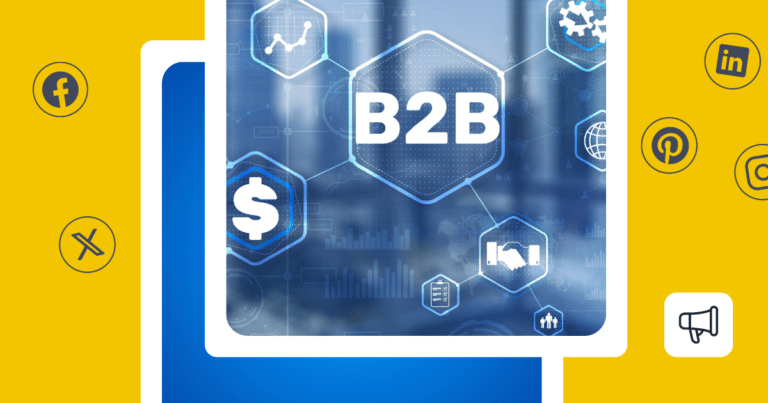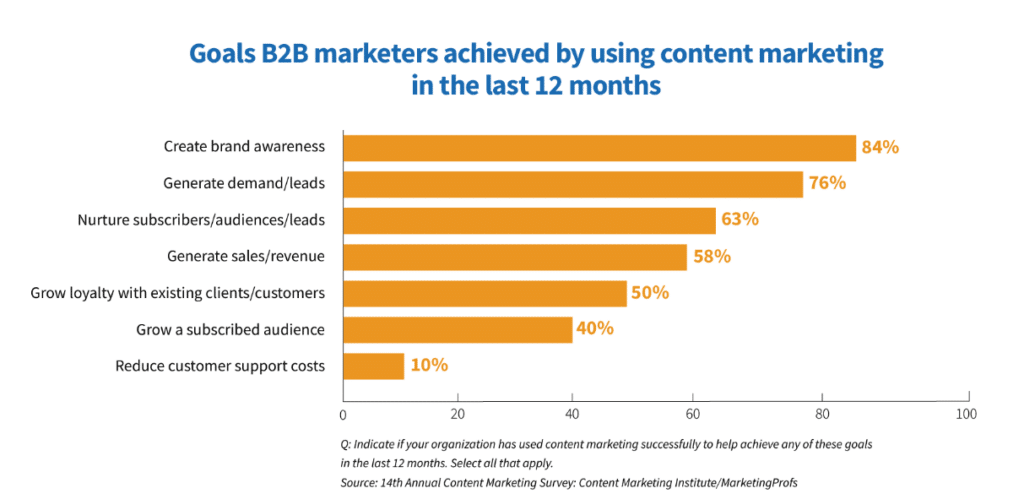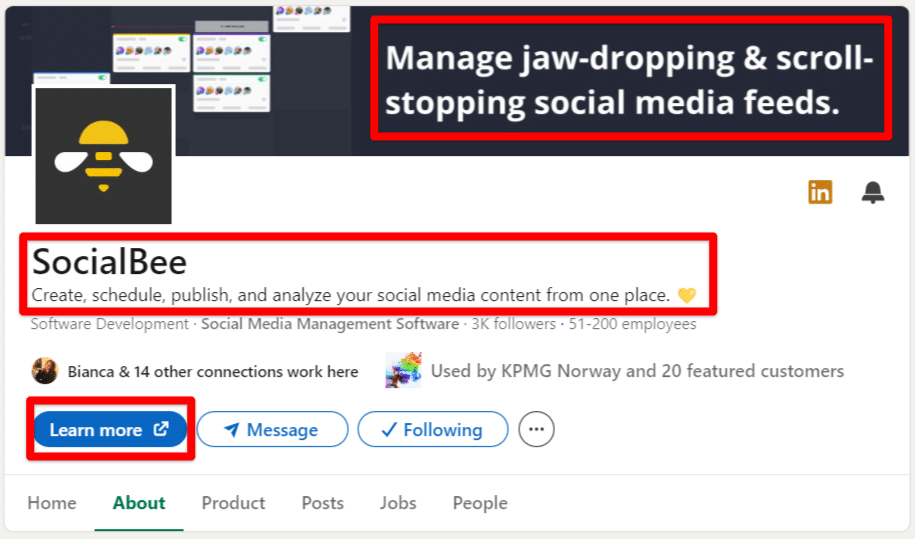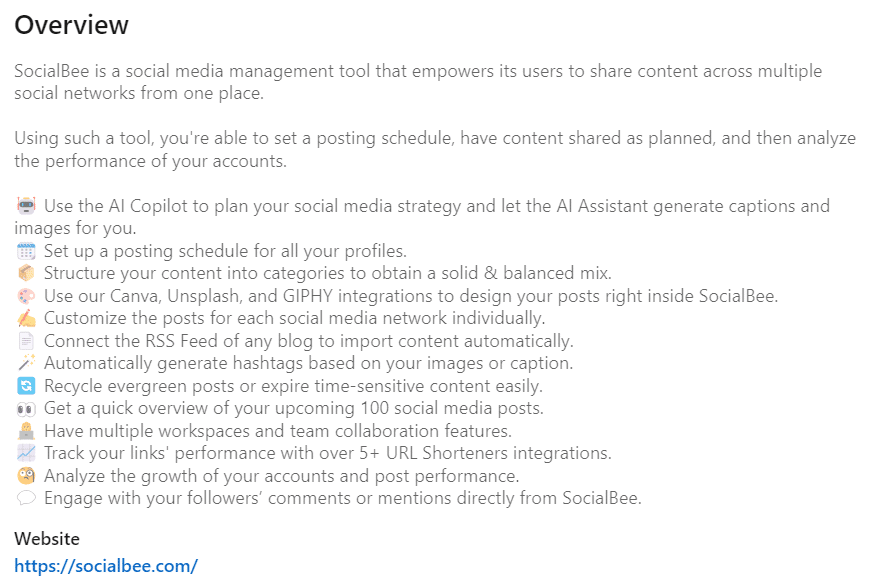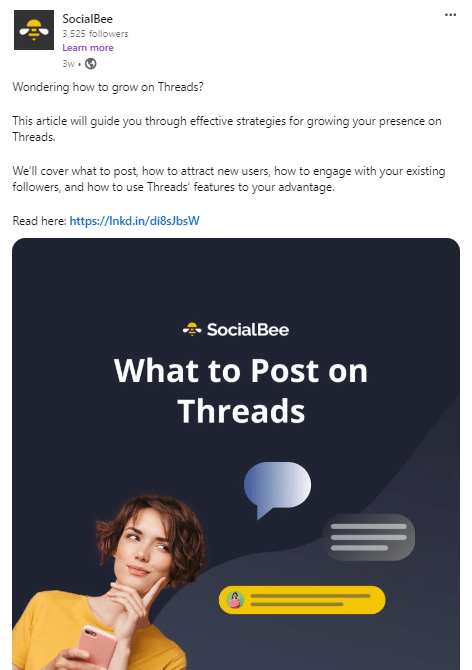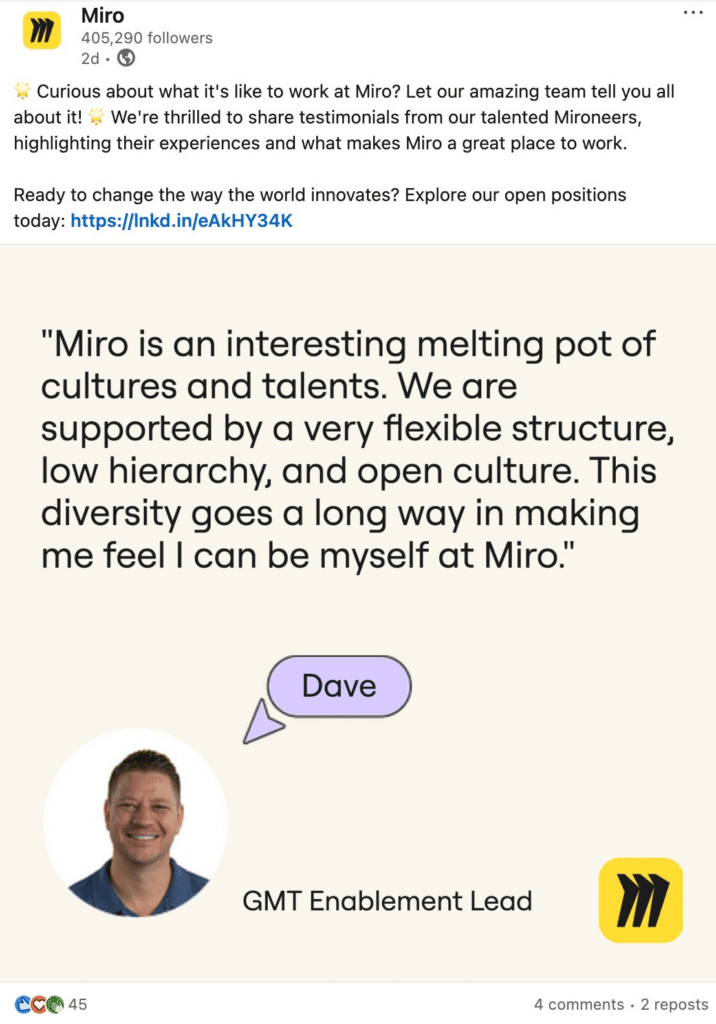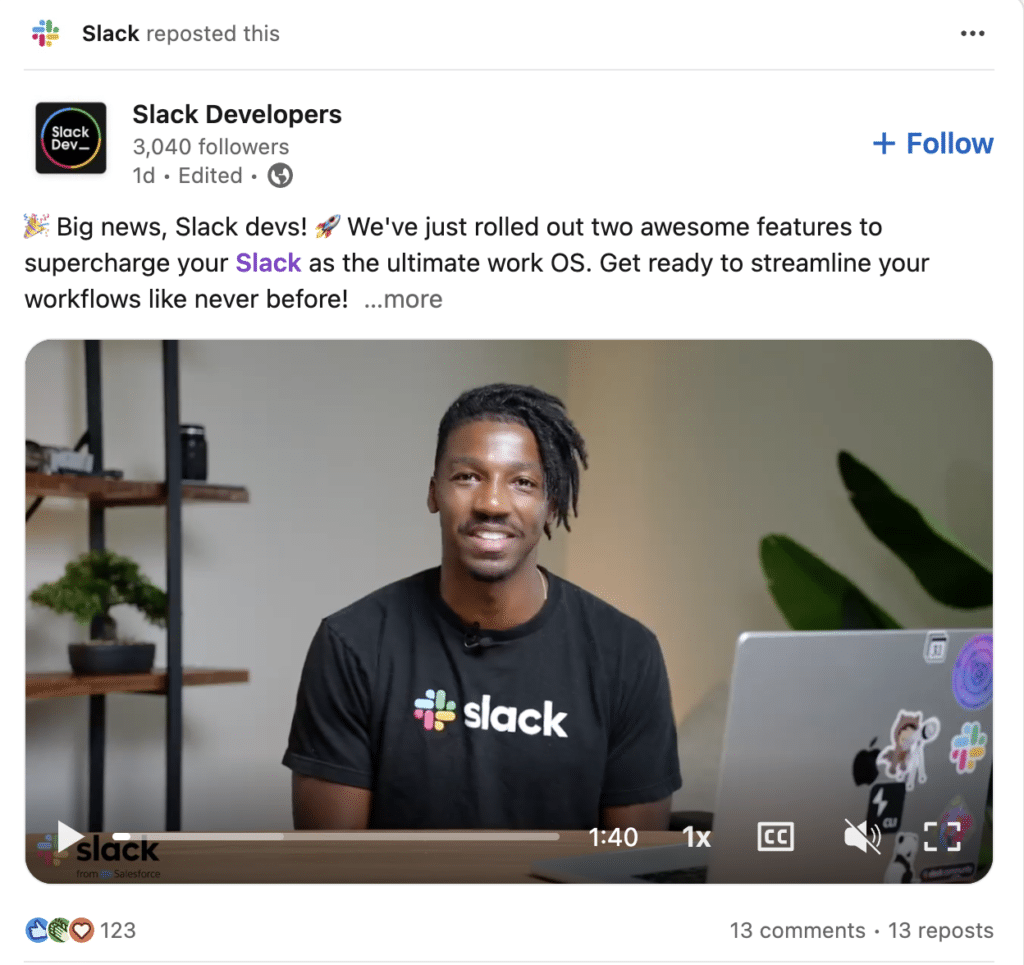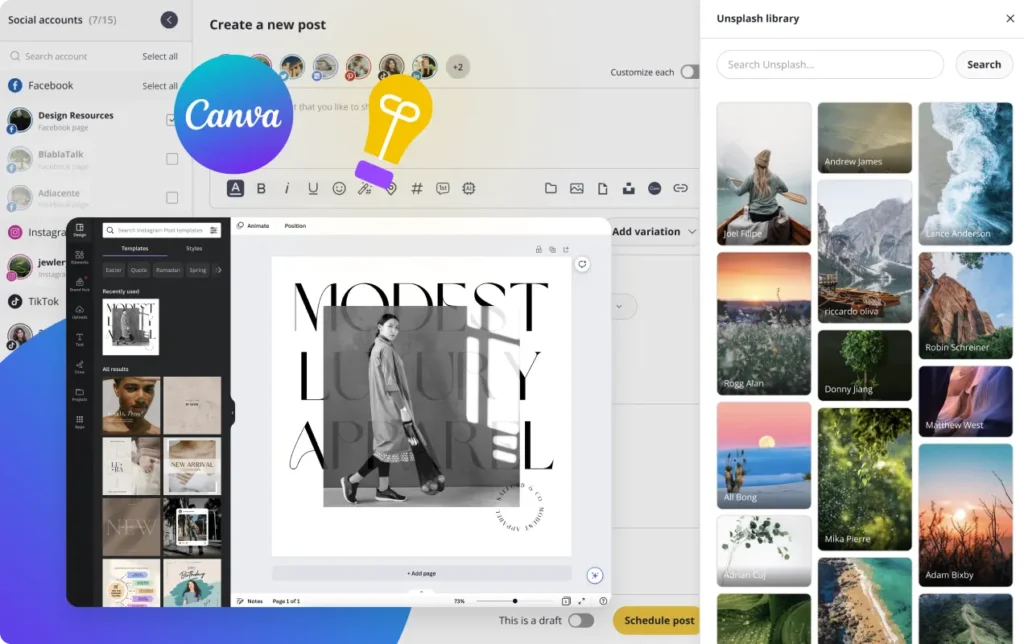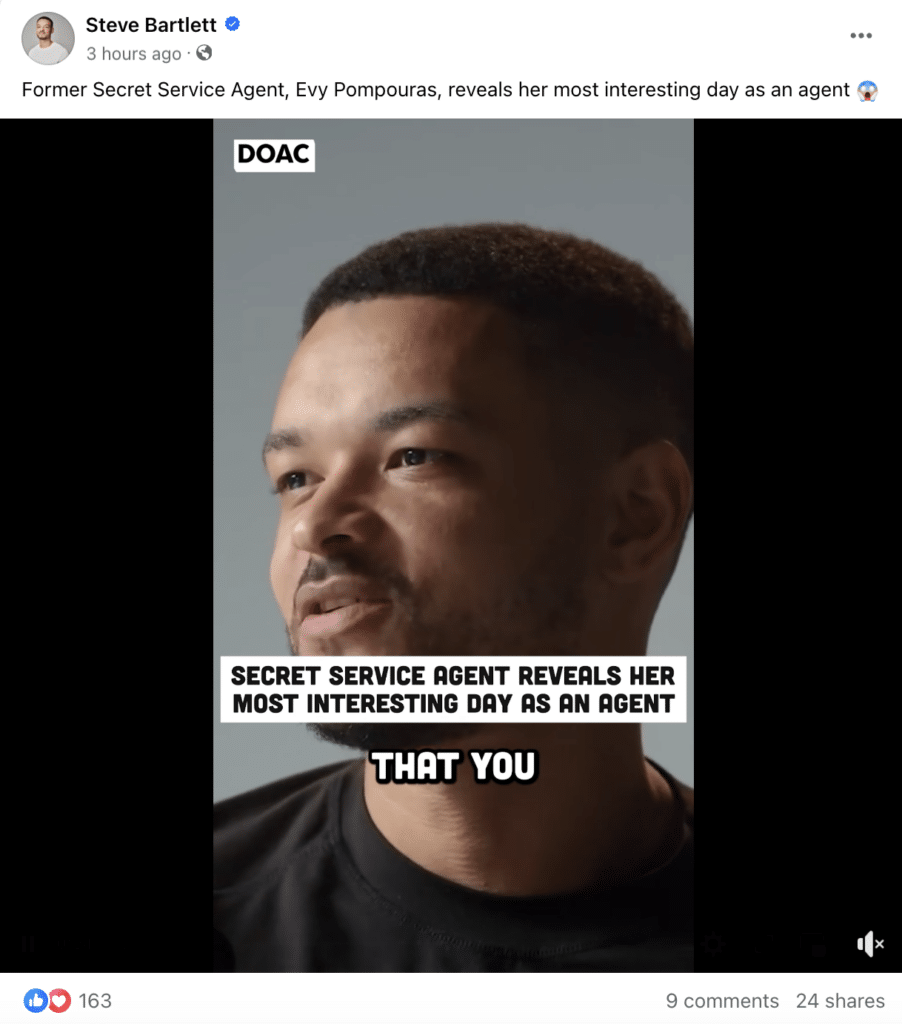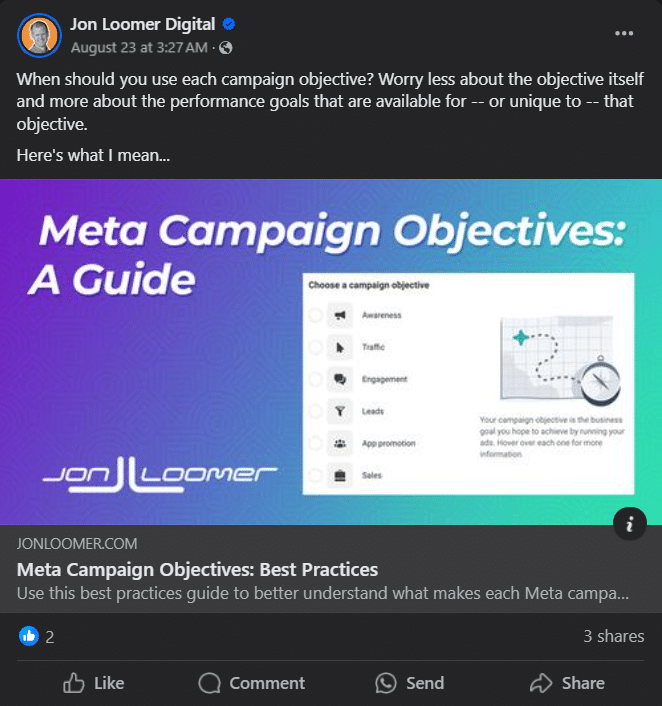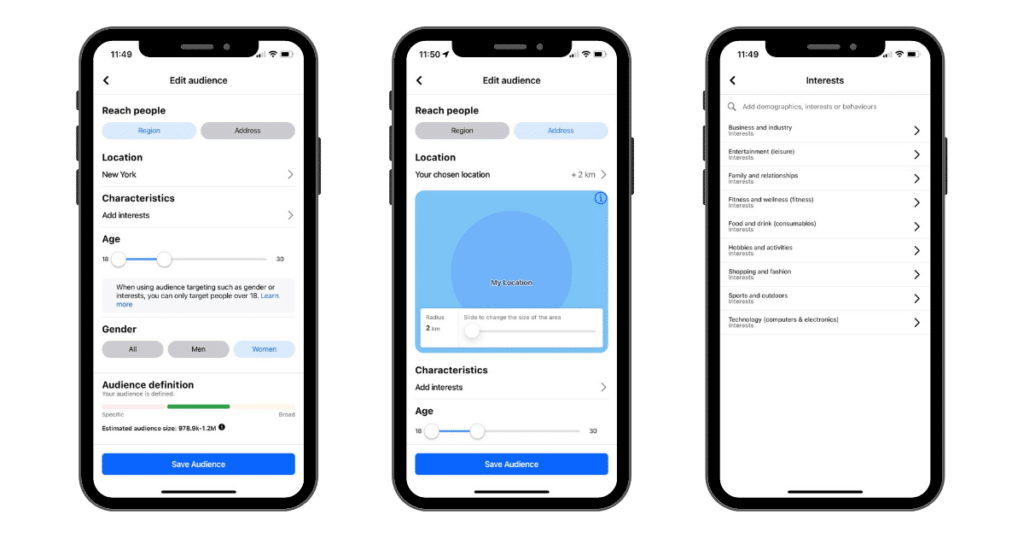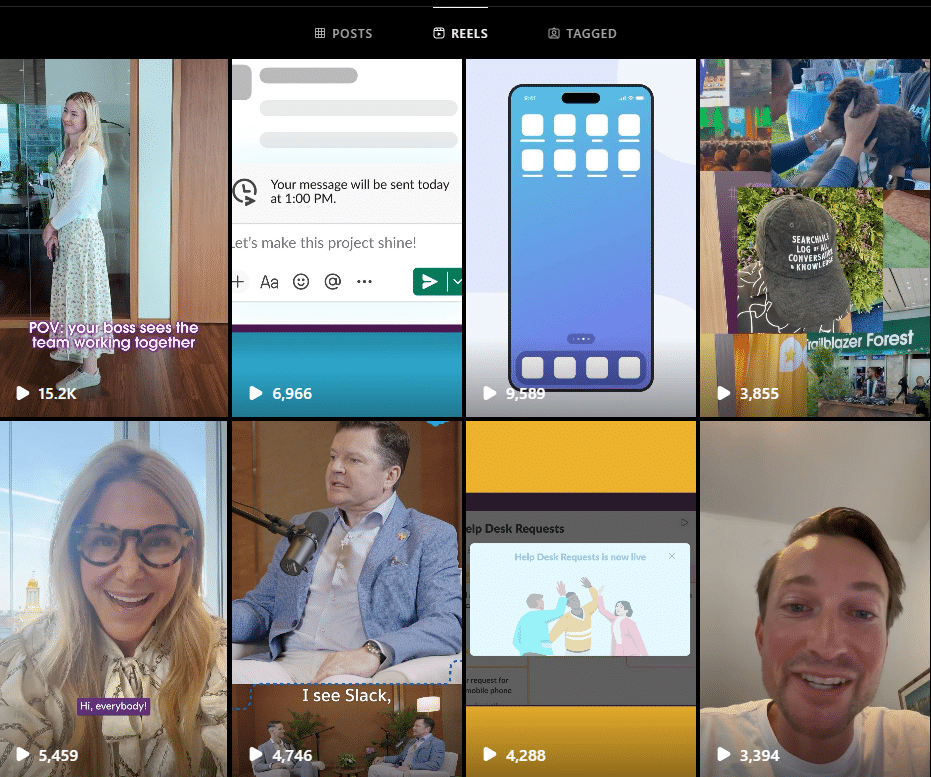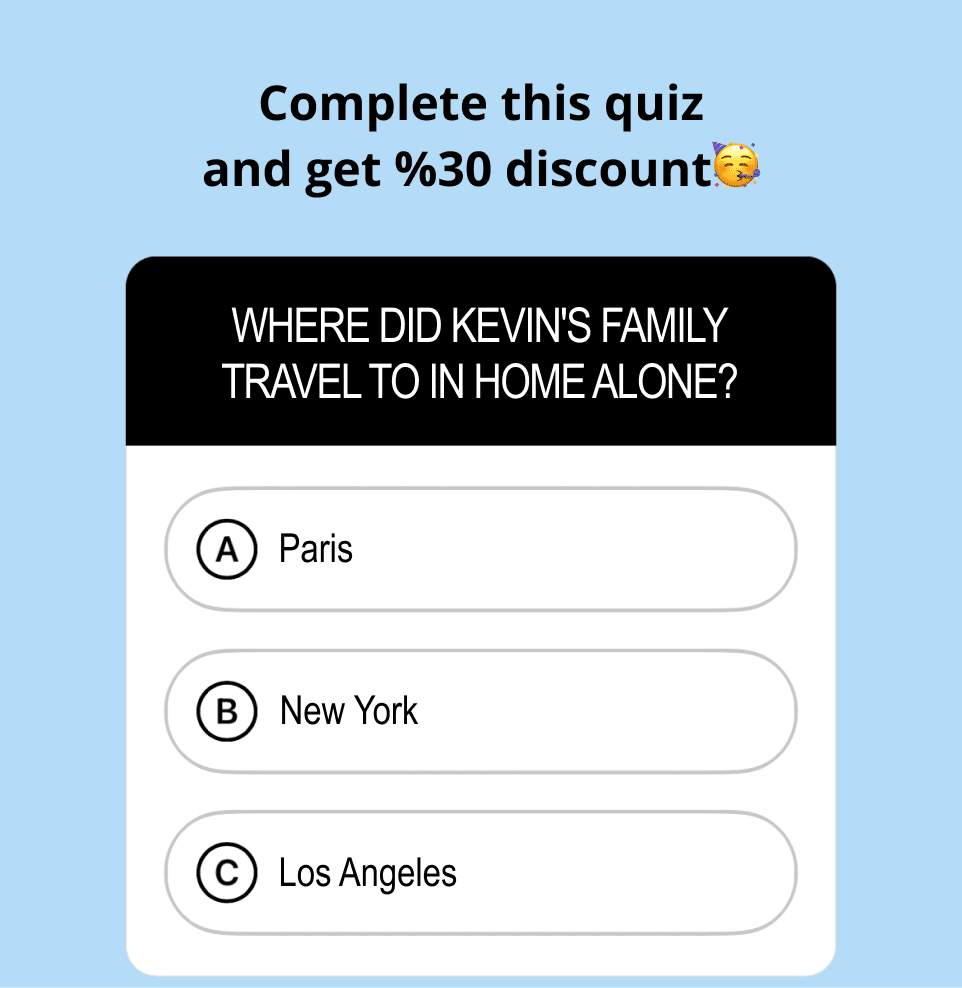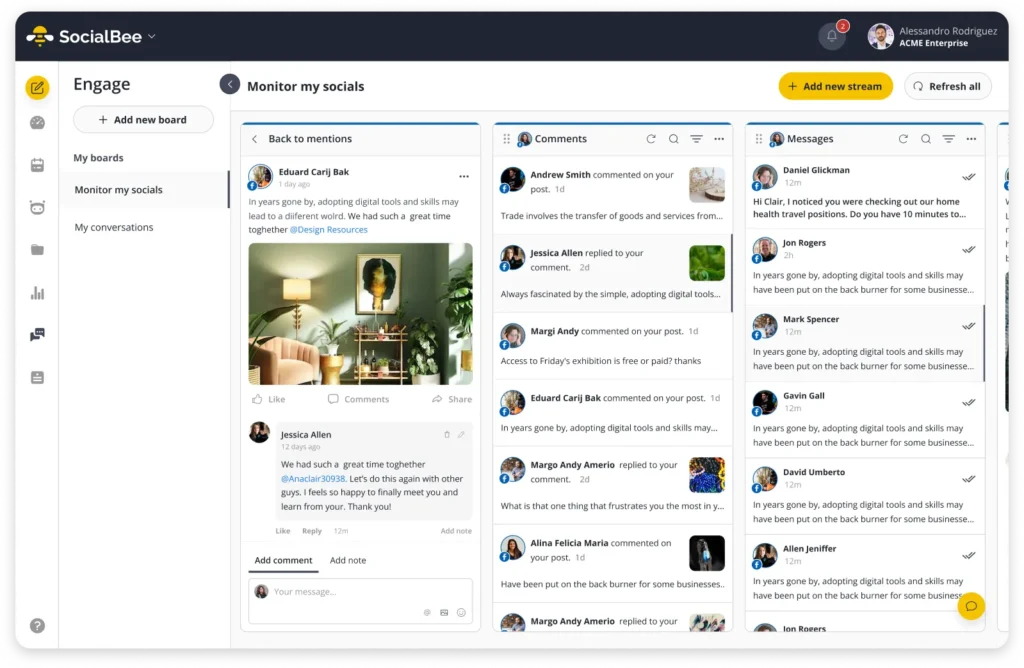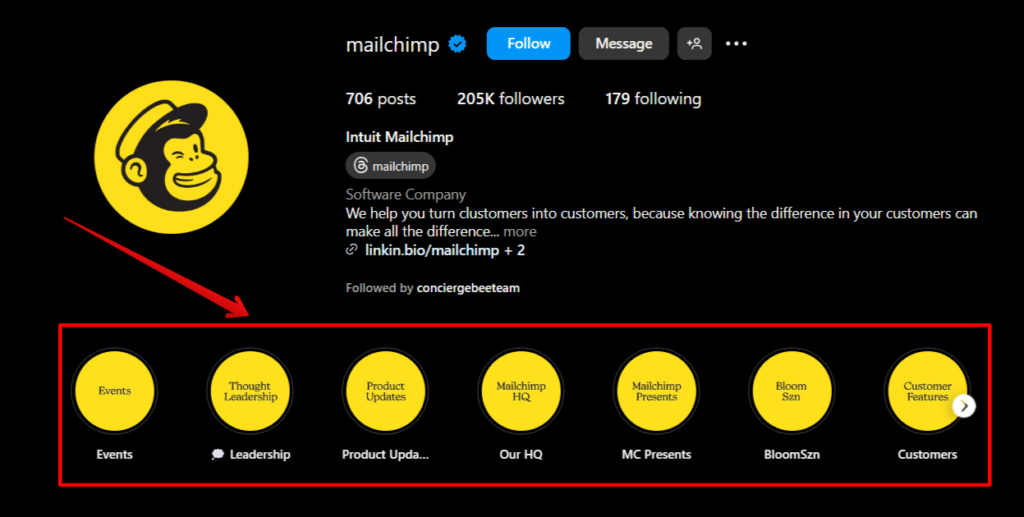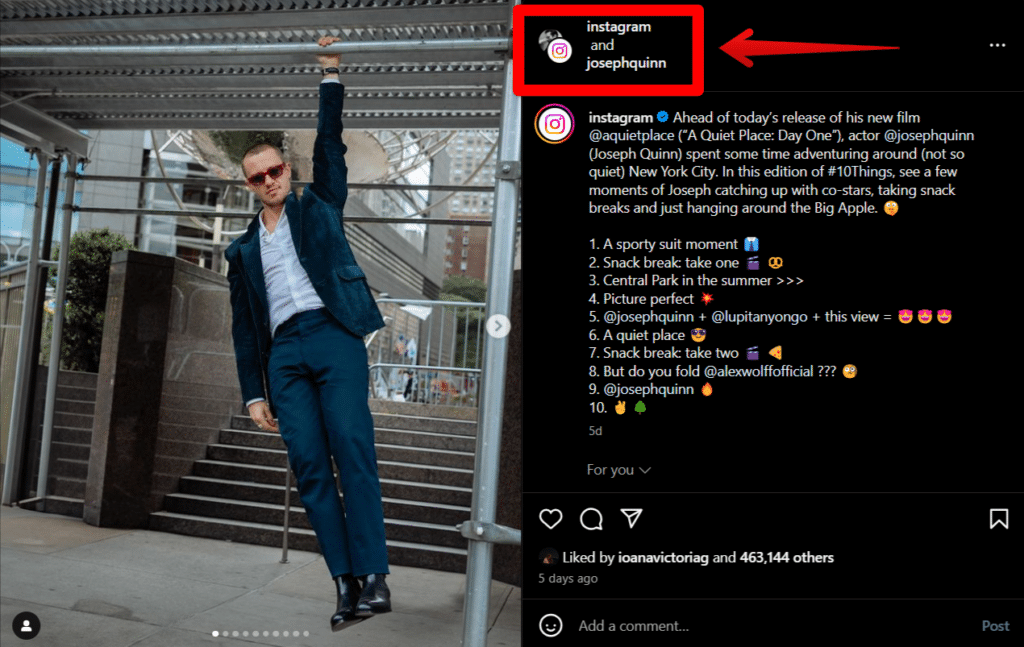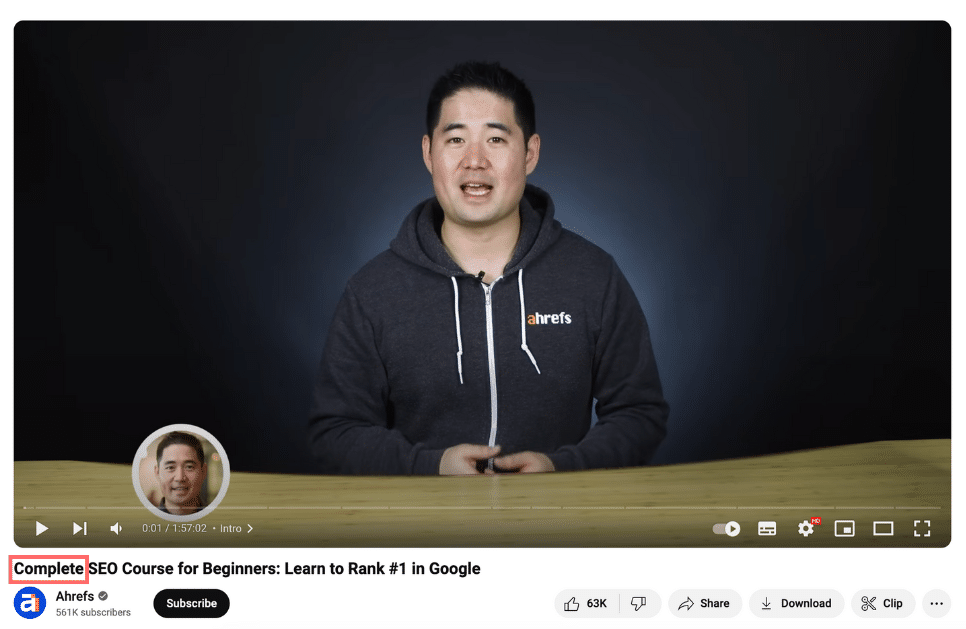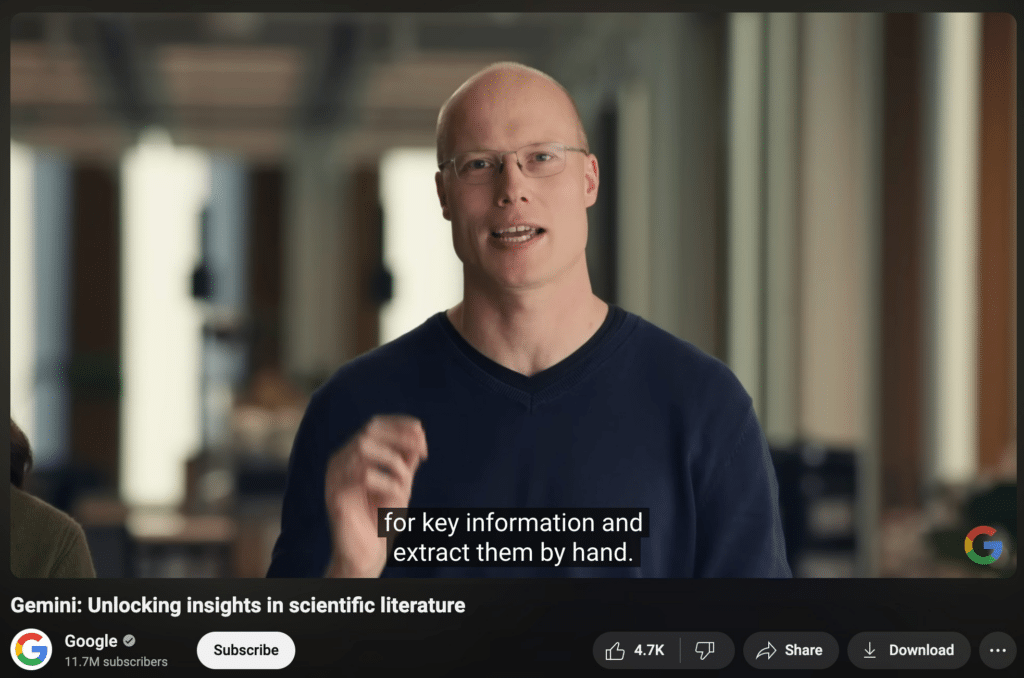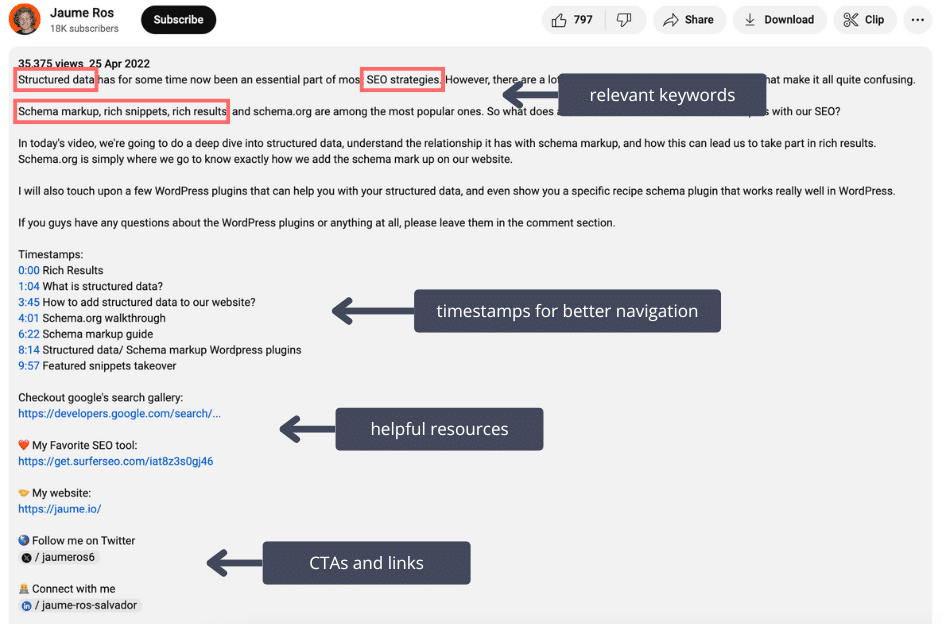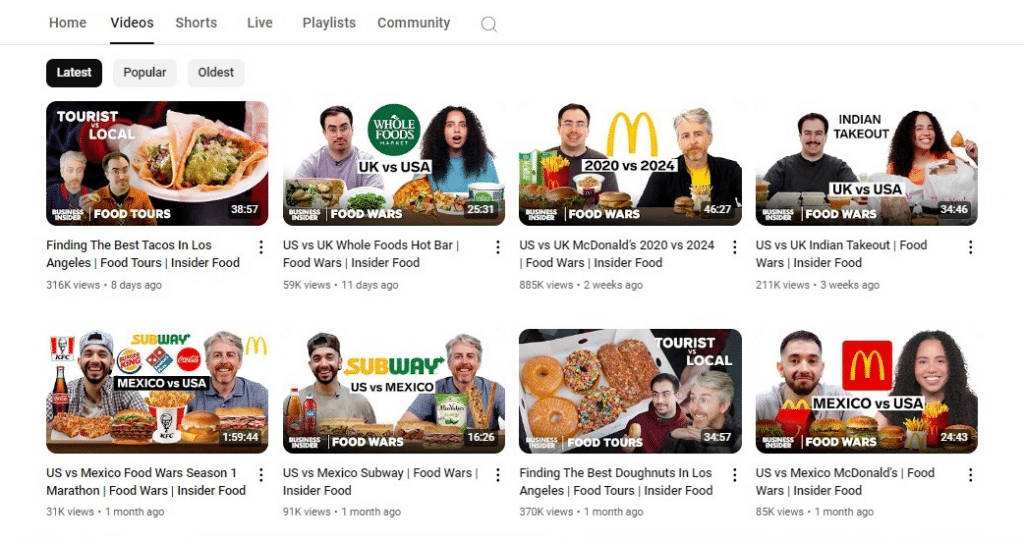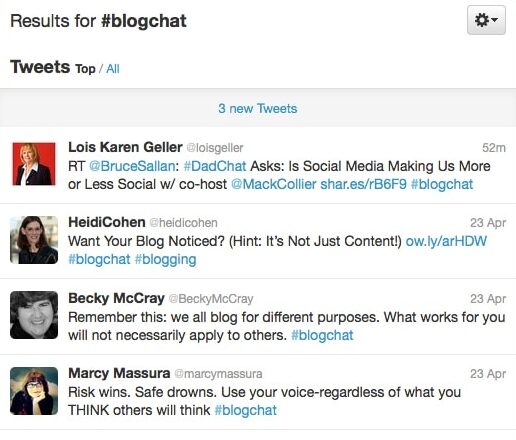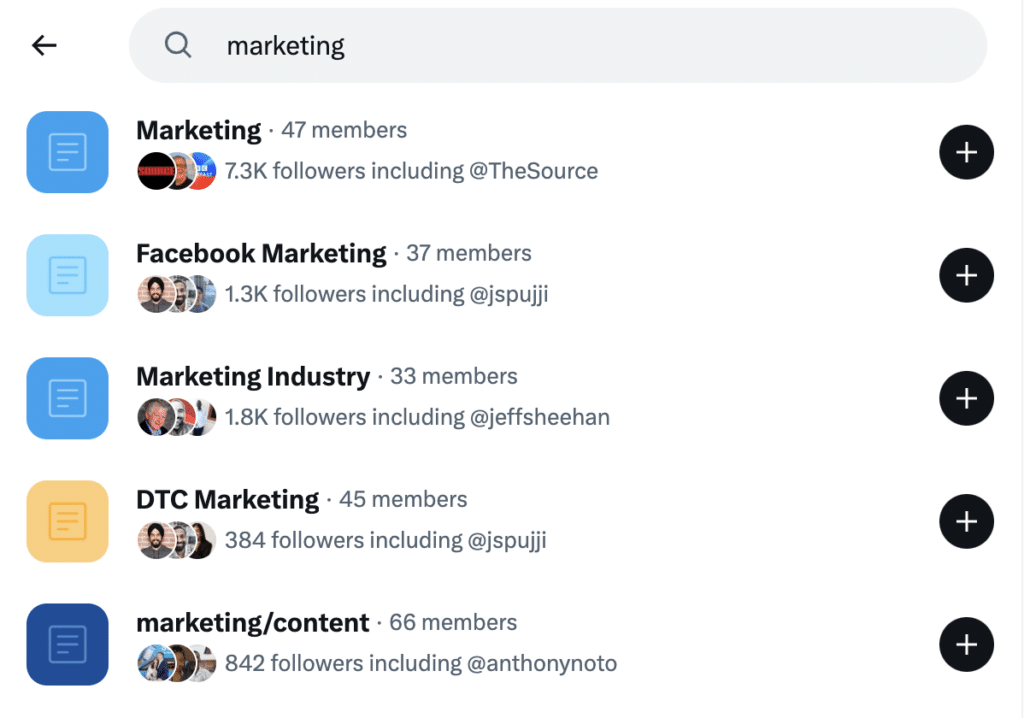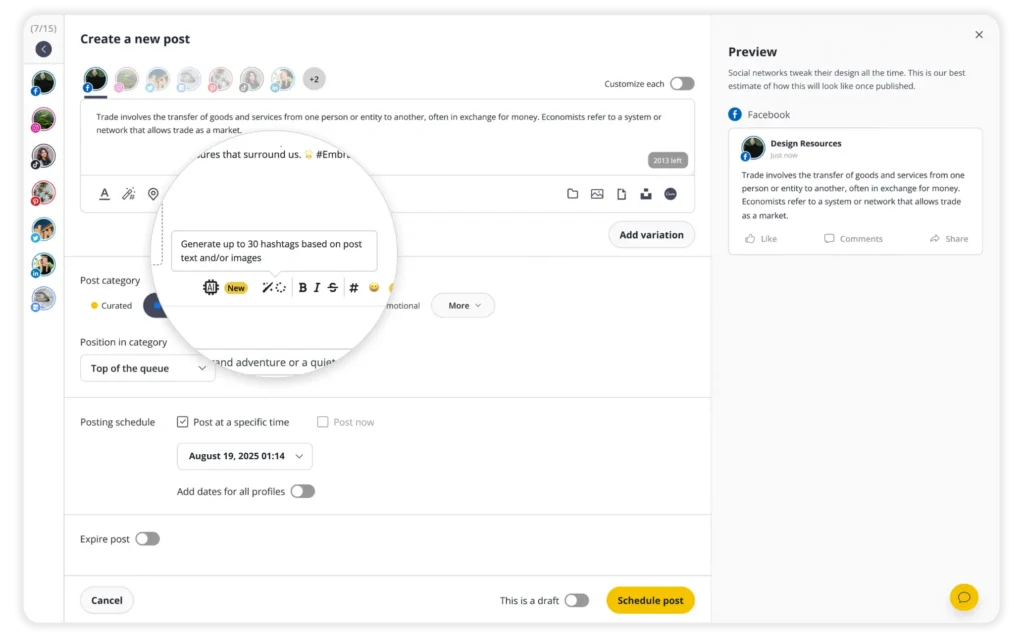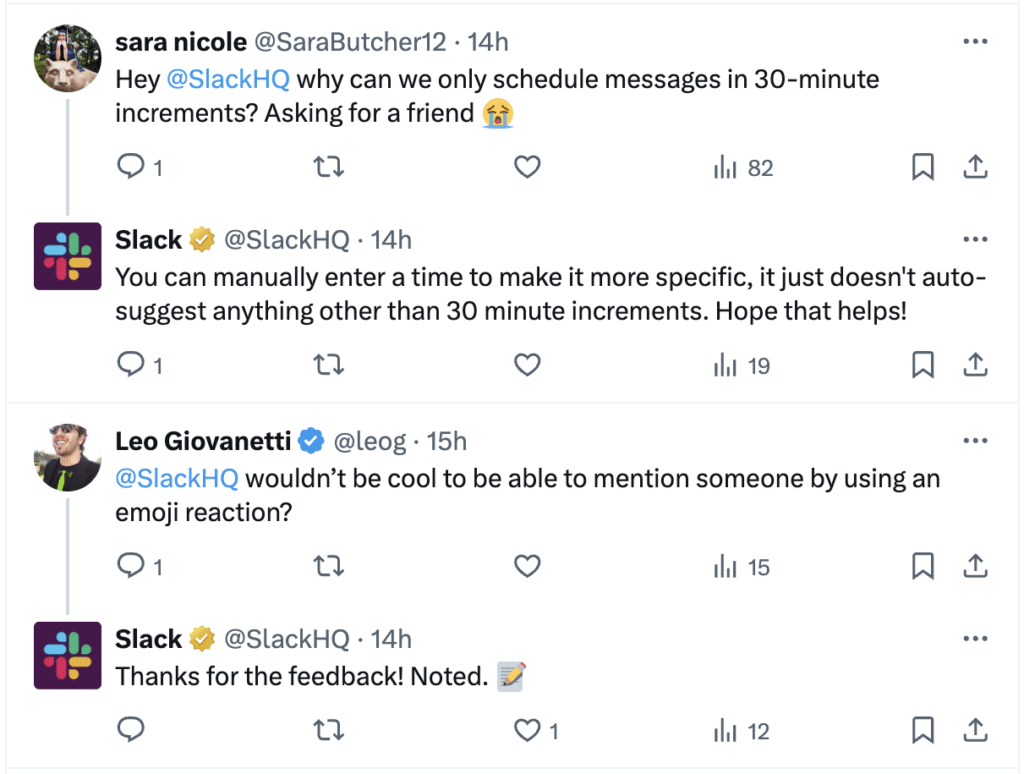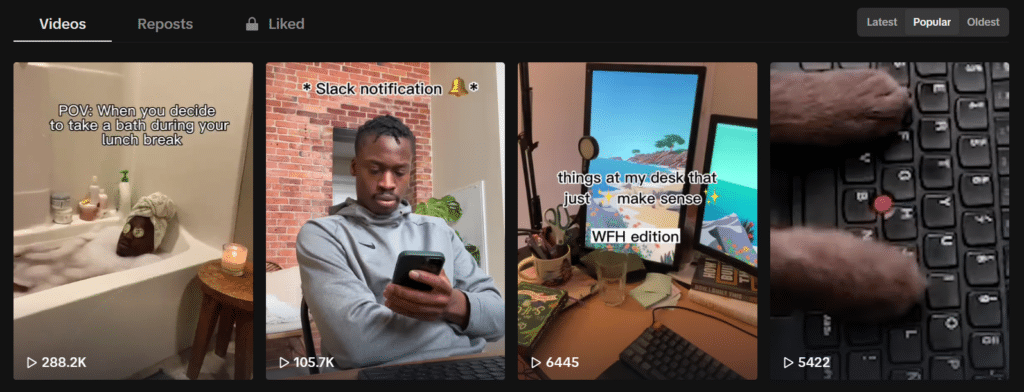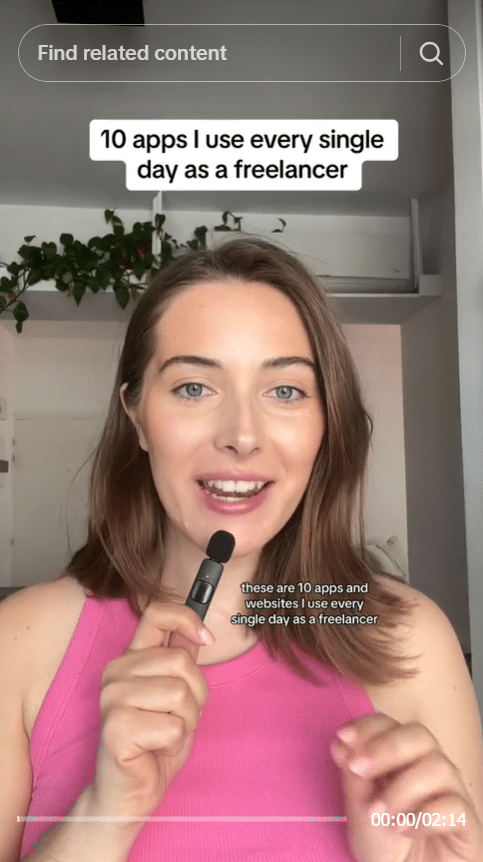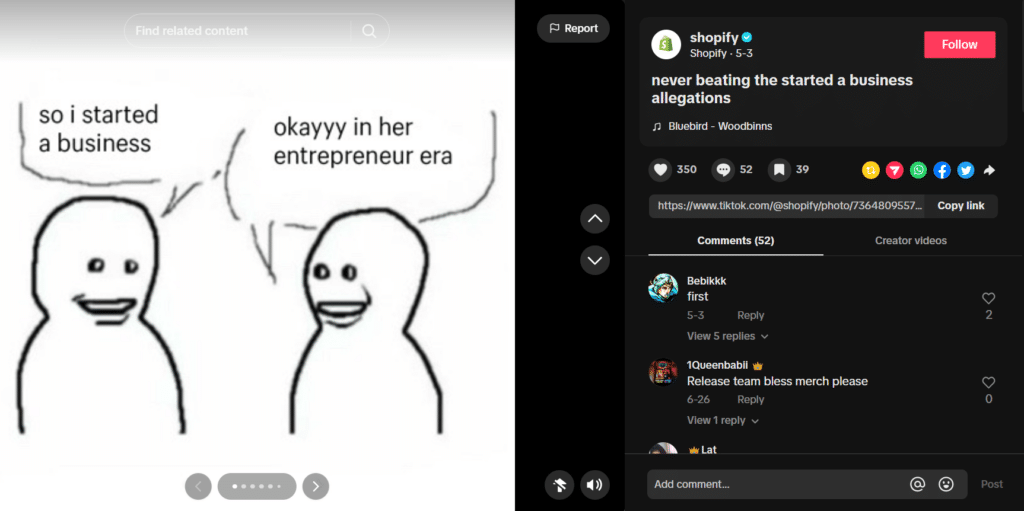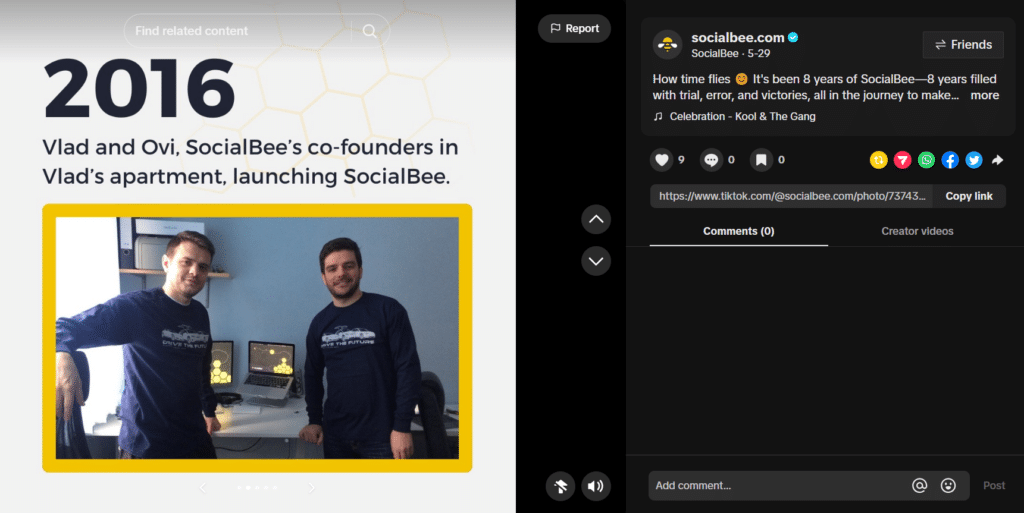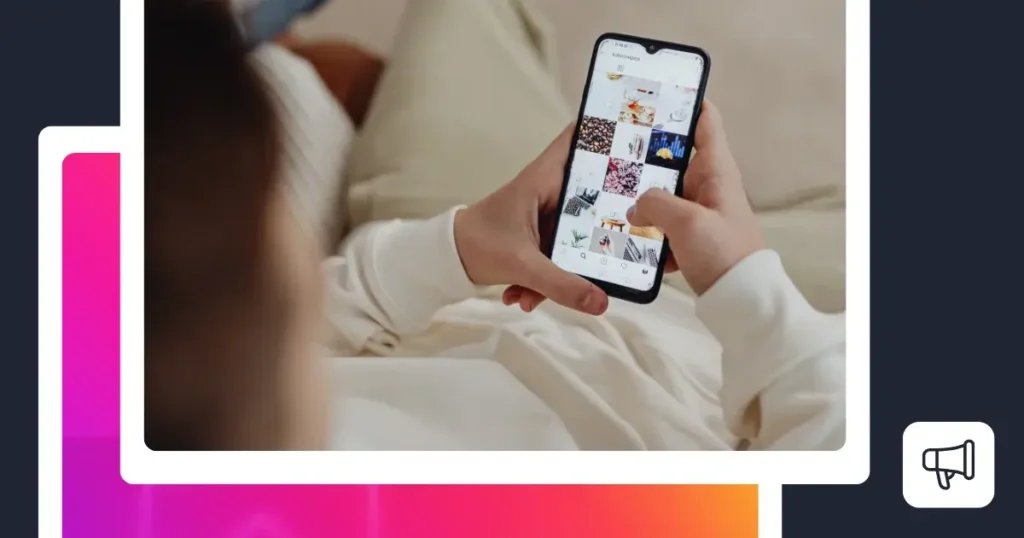
Guest Author
Most B2B marketers agree that social media is the top way to drive brand awareness. Nine out of 10 B2B marketers use social media as a preferred medium to share and promote content.
If you want new B2B prospects to discover your product, you need compelling social media campaigns that draw in your target community and fuel engagement.
But, with so many social media channels to choose from, which do you pick?
Read on to discover the top social media channels for your online B2B business and the best ways to use them to foster brand awareness and increase conversions.
Short Summary
- Social media marketing is essential for businesses to grow their audience, understand customer behavior, build brand awareness, and drive sales through engagement.
- Social media helps B2B businesses build credibility, nurture relationships, and stay visible to decision-makers during critical buying moments.
- LinkedIn is ideal for B2B marketing, with a large audience and features that boost engagement and lead generation.
- Maximize LinkedIn by varying post lengths, using targeting tools, and joining LinkedIn Groups to build influence.
- Facebook ranks second, allowing B2B brands to engage decision-makers through videos and podcasts.
- Focus on thought leadership content, targeted ads, and monitoring competitors to optimize your strategy on Facebook.
- Instagram, third for B2B, excels with short Reels that target different personas and boost visibility.
- Engage on Instagram through comments, Stories, and creator collaborations to expand reach.
- YouTube, fourth for B2B, helps decision-makers discover new products, making paid ads and brand videos a must-have.
- On YouTube, focus on storytelling, optimize videos for search, and repurpose content for broader reach.
- X (Twitter) is valuable for B2B influencer collaborations and expanding reach through search and hashtags.
- On X, use hashtags, provide real-time customer service, and post during peak business hours.
- Although TikTok is the least used B2B platform, it’s growing as more brands succeed with engaging short-form videos.
- On TikTok, focus on user-generated content, adjust your brand voice, and share behind-the-scenes glimpses to build connections.
Why Is Social Media Marketing Important for Businesses in General?
Social media provides both online and offline companies with an opportunity to grow their market, understand their audience, and fuel higher sales.
Since people spend an average of two and a half hours on social media each day, good social media strategies are an integral part of any business’s marketing campaign. That’s why a majority of global marketers continue to invest in social media as a marketing strategy.
One important reason why businesses use social media is for social listening. This is an important strategy through which brands collect behavioral data from potential customers.
Most businesses use this information to understand their target audience. This helps to paint a clearer picture of their audience’s characteristics and what they like. By doing this, businesses can better target marketing campaigns to appeal to their target audience.
One of the most critical uses for social media marketing is to grow brand awareness. Many brands claim this is the main reason they use social media — it helps them introduce themselves to new markets and potential customers.
The growth of a brand on social media leads to a higher demand for its products. These leads can then be nurtured and transformed into sales. Content marketing on social media also allows B2B brands to improve loyalty with existing customers.
Social media also helps brands drive engagement. By creating connections between the brand and its target audience, companies can push prospects further down the sales funnel.
Lastly, while some companies sell directly from social, others focus on offering promotions that help to increase e-commerce conversion rates on their websites.
Why Is Social Media Marketing so Important for Online B2B Businesses?
In B2B, social media marketing is really valuable for building brand credibility, generating and nurturing leads, and establishing thought leadership. This is because B2B transactions typically involve longer decision-making processes and multiple stakeholders, making relationship-building key.
Don’t be fooled into thinking social networking is simply a personal activity conducted in one’s free time. Social media platforms are a primary research tool for company decision-makers looking for B2B tools.
By consistently sharing valuable content and engaging with your audience, your brand can establish credibility, nurture relationships, and stay top-of-mind during crucial decision-making moments. When B2B buyers turn to social media to research solutions, your active presence ensures they see your brand as an authority they can trust.
What Are the Top Social Media Channels for Online B2B Businesses?
While various social media platforms such as TikTok and Instagram seem to reign when it comes to regular usage, the top looks a bit different when it comes to B2B businesses. According to Statista, these are the best social media platforms for B2B brands, in the following order:
- LinkedIn – 48%
- Facebook – 28%
- Instagram – 15%
- YouTube – 6%
- X (Twitter) – 2%
- TikTok – 1%
1. LinkedIn
Globally, LinkedIn has a potential ad reach of over 1 billion. Not only is this a broad market, but it’s also specifically geared toward professionals, making it easier for B2B brands to target customers through their professional persona.
Right now, 94% of B2B marketers use LinkedIn in their content marketing strategy.
This isn’t surprising since it’s an increasingly popular platform for companies to research B2B tools. In fact, a third of decision-makers admit to using LinkedIn for B2B research.
To use LinkedIn as an effective social media tool, you need to turn your LinkedIn page into a lead generation machine.
This means structuring your LinkedIn business page so that it leads to a conversion action, such as heading to your website, signing up for a demo, or booking a call.
Look at how SocialBee uses its LinkedIn profile to provide more information about its product and generate traffic to other important pages:
Firstly, the header boldly and clearly explains what SocialBee helps potential customers achieve. It’s both catchy and informative. It’s also paired with a headline that clearly states exactly what a SocialBee subscription brings to the table.
Next, notice how the overview is worded as a no-nonsense, straight-to-the-point sales pitch. It tells prospects exactly how SocialBee will solve their existing problems.
Lastly, note the call-to-action (CTA) links that encourage leads to convert into customers, by heading to the website.
Now, look at the posts SocialBee shares.
Not only do they use engaging images and videos to encourage users to share the information, but each post is also complete with a CTA.
No matter where a prospect heads on the SocialBee LinkedIn page, they’re encouraged to head to the website or other useful links, converting themselves to a lead.
Given that LinkedIn was specifically built as a tool for professionals, it has many built-in features designed specifically to help your conversion rates. For example, growing your LinkedIn followers pays off due to the notifications that are frequently sent to users about new content that gets published.
LinkedIn Best Practices for B2B Brands
Here are three ways you can maximize your social media efforts on LinkedIn as a B2B brand:
- Share more images and videos.
- Take advantage of LinkedIn’s targeting capabilities.
- Join LinkedIn groups.
Tip 1: Share More Images and Videos
LinkedIn posts with images get 98% more comments than text-only posts, and videos are shared 20 times more than other types of content. These numbers clearly show that visuals grab attention and encourage interaction, which is essential for any brand trying to connect with its audience on LinkedIn.
Visual content simplifies complex ideas and helps convey your brand’s personality through various design elements. A single image can showcase your team and put a face to the brand, highlight a product feature that’s easier to understand visually, or capture a moment from a company event, making your brand feel more relatable. Miro’s post is a great example of this.
Videos take this a step further by offering a dynamic way to explain your services, share customer testimonials, or highlight industry insights. This kind of content not only educates but also builds trust, positioning your brand as an expert in the field.
For example, Slack creates short LinkedIn videos to showcase new features, teaching their audience how to use them effectively. This approach promotes the feature while also educating users, and helping them make better use of the product.
High-quality images that reflect your brand’s identity and professional videos that address your audience’s needs are key. Remember, a lot of people browse LinkedIn on their phones, so ensure your videos are mobile-friendly and include subtitles, as many users watch without sound.
SocialBee simplifies maintaining a consistent visual style across all your social media accounts through its Canva integration.
You can open and preview any design from your Canva library inside SocialBee, import it directly into your post, and schedule your content from the same place.
Tip 2: Take Advantage of LinkedIn’s Targeting Capabilities
LinkedIn’s advanced targeting capabilities are a game-changer for B2B businesses. With precise filters like industry, job title, company size, and more, you can tailor your content to reach exactly the right audience. Firstly, this means you can use the filters to search and connect with your target audience. After that they will see your content on their feed.
By leveraging LinkedIn’s targeting tools, you ensure that your message hits the mark, driving higher engagement and conversions. Plus, it allows you to allocate your marketing resources more efficiently, focusing on the segments that offer the most growth potential.
Tip 3: Join LinkedIn Groups
LinkedIn Groups are a goldmine for B2B networking. By actively participating in these groups, you can connect with industry peers, share valuable insights, and stay on top of trends.
It’s a powerful way to grow your influence, expand your LinkedIn network, and position your business as a go-to resource in your industry.
2. Facebook
Facebook has over 3 billion active monthly users, meaning there’s a huge potential market to target.
But it’s not just that it’s such a popular marketing platform. Facebook is a prime location for company decision-makers researching B2B products and services. Use your Facebook business page to keep potential and existing customers in the loop and to engage them in your brand.
Videos are one of the most effective ways to engage your audience and drive sales. 91% of people have watched a product explainer video and 82% say they’ve been convinced to buy after watching a brand’s video.
What’s more, people are twice as likely to share a video than any other form of content.
In this respect, it’s wise to use your Facebook business page to share videos that engage your B2B prospects with product developments and brand updates. You can share your videos in relevant Facebook Groups to boost visibility even more.
Podcasts are another type of content that is great to share on Facebook. Podcasts have been making more of an appearance lately, with snippets becoming viral on social media – and Facebook is no exception.
Don’t underestimate the power of podcasts. In July 2024 alone there were over 131,865 podcast downloads on Facebook, and the number has been growing steadily ever since. Depending on the type of podcast you have, LinkedIn can also be an appropriate channel to share it on.
Facebook Best Practices for B2B Brands
Your Facebook marketing efforts will be much more efficient if you keep these three tips in mind:
- Focus on thought leadership content.
- Run targeted Facebook ad campaigns.
- Monitor and analyze competitor activity.
Tip 1: Focus on Thought Leadership Content
Establishing your B2B brand as a thought leader on Facebook is key to building trust and credibility with your audience. Share insightful articles, industry news, and expert opinions that address the challenges and pain points your target audience faces.
By consistently providing educational and relevant content, you position your brand as a go-to resource, making it easier for potential clients to see you as an authority in your field. This not only attracts followers but also nurtures leads by keeping your brand top-of-mind when they’re ready to make purchasing decisions.
Remember, thought leaders don’t just share knowledge—they influence industry conversations.
Tip 2: Run Targeted Facebook Ad Campaigns
B2B marketers can reach a very particular demographic by running customized ad campaigns on Facebook. To zero in on decision-makers, use Facebook’s in-depth targeting tools to filter by job title, industry, and company size.
Use captivating images and obvious calls to action to motivate your target audience to take action, and modify your ads to meet their specific problems and requirements. The use of retargeting to maintain contact with site visitors who have already engaged with your business is another strategy to think about.
With targeted ads, you can get the most out of your advertising budget by directing your social media marketing efforts to the correct individuals at the right time, which in turn generates better quality leads.
Tip 3: Monitor and Analyze Competitor Activity
Just like in any other sector, in B2B it is essential to closely monitor the Facebook activities of your competitors. You can learn a lot about what does and does not work in your business by keeping an eye on their content strategy, audiences, and engagement levels.
Some important aspects to track are:
- Content types
- Engagement metrics
- Posting frequency
- Ad campaigns
- Audience feedback
- Visual branding
- New product/service announcements
- Influencer partnerships
- Content themes
- Response time
Take this data and use it to improve your own strategy, find missing information, and discover opportunities. Both keeping up with the competition and coming up with new ideas for your own campaigns can be facilitated by routinely reviewing their actions and social media analytics.
3. Instagram
Instagram may not seem like a particular professional social media platform, but it’s the third one in popularity for B2B firms.
With the rise of visual content, specifically videos, on all platforms, one of the best ways to use Instagram is to create short videos, known as Reels, to demonstrate how your B2B product works, so customers can see it in action.
Make sure the videos are short and informational, and that they follow best practices when it comes to being favored by the Instagram algorithm. By showing all the different use cases of your product or service, you target all the potential customer personas in your audience.
Look at how the team messaging app, Slack, does this on Instagram:
Just by looking at an overview of Slack’s Reels page we can see the varied approaches the messaging software company takes to reac different potential clients.
Their content is a combination of feature showcases, latest trends, and informative content from team members and other professionals (fun fact: the woman on the bottom left Reel is Slack’s CEO, Denise Dresser!).
Instagram Best Practices for B2B Brands
Here are three things you can do to take your Instagram marketing to the next level as a B2B brand:
- Engage with your audience.
- Create Stories and Stories Highlights.
- Collaborate with other creators with Instagram’s Collab feature.
Tip 1: Engage With Your Audience
Engagement is key on Instagram, especially for B2B brands. Don’t just post content—start social media conversations! Respond to comments, ask questions in your captions, and use interactive features like polls and Q&A stickers in your Stories.
The more you interact, the more you show your audience that you value their input. This builds trust and fosters a community around your brand. Plus, Instagram’s algorithm rewards engagement, meaning your posts are more likely to be seen by a broader audience. Remember, social media is a two-way street, so make engagement a top priority in your strategy.
Want to stay on top of your audience’s comments, mentions, and messages? SocialBee’s Engage Module makes it easy to manage and respond to all your Instagram conversations in one place. By actively responding to comments and messages, you not only build stronger relationships with your followers but also increase your visibility on social platforms.
Manage all Instagram interactions in one place with SocialBee’s Engage Module.
Tip 2: Create Stories and Stories Highlights
Instagram Stories offer a fantastic way for B2B brands to share real-time updates, behind-the-scenes content, and quick tips. They’re perfect for showcasing the human side of your brand or sharing timely information.
But don’t let your best Stories disappear after 24 hours—use Stories Highlights to keep them accessible on your profile. Organize Highlights by theme or topic so visitors can easily find the information they’re interested in.
Tip 3: Collaborate With Other Creators With Instagram’s Collab Feature
Collaboration is a powerful way to expand your reach on Instagram. By using Instagram’s Collab feature, B2B brands can co-create posts with partners, influencers, or even clients. This feature allows the same post to appear on both parties’ social media accounts, exposing your content to a broader audience.
It’s a win-win: you gain visibility in front of a new audience, and your collaborator benefits from the association with your brand. Whether you’re launching a joint webinar, sharing customer success stories, or highlighting a strategic partnership, collaborating on Instagram can significantly boost your brand’s visibility and credibility.
4. YouTube
YouTube has 2.7 billion active monthly users, making it a crucial platform for businesses trying to reach large target markets.
Moreover, about 90% of people on YouTube end up discovering new brands or products, which shows just how much potential it has for helping businesses grow.
YouTube isn’t just for watching fun videos; it’s a serious tool for businesses to show off what they do and how they do it. For instance, creating mini-documentaries about your business processes or the challenges your industry faces can really pull viewers in.
Go for content that speaks directly to the needs and challenges of your target business customers. This could be how-to videos, tutorials, or expert talks that not only showcase your expertise but also explain how your products or services solve specific industry problems.
YouTube also helps you get your videos in front of the right eyes. With smart use of SEO—like picking the right titles and keywords—you can help people find your videos when they’re searching for topics related to your business.
Live sessions are another great way to generate real-time engagement. Use them to host Q&A sessions, product demos, or industry discussions. They allow for immediate feedback and interaction.
And don’t forget about YouTube ads. They can be super targeted, meaning you can specifically aim your ads at the types of professionals who might want what you offer.
YouTube Best Practices for B2B Brands
Keep these three things in mind when working on your YouTube marketing campaign:
- Focus on storytelling.
- Optimize your videos for YouTube search.
- Save time and resources by repurposing content.
Tip 1: Focus on Storytelling
Storytelling is at the heart of engaging YouTube content, especially for B2B brands. Instead of just showcasing your products or services, tell a compelling story that resonates with your audience’s challenges and needs.
Whether it’s through customer success stories, behind-the-scenes footage, or industry insights, storytelling makes your content relatable and memorable. It helps humanize your brand, making complex information easier to digest.
By focusing on storytelling in your content creation, you can produce videos that not only inform but also inspire and connect with viewers on a deeper level, driving stronger brand loyalty and engagement.
Tip 2: Optimize Your Videos for YouTube Search
Optimizing your B2B videos for YouTube search is a must to ensure they reach the right audience. Start by researching relevant keywords your target audience is likely to use. Incorporate these keywords naturally in your video titles, descriptions, and tags.
Additionally, create eye-catching thumbnails and compelling video descriptions that clearly outline the value of the content. This optimization boosts your video’s visibility in search results, increasing the chances of it being discovered by potential clients.
Remember, YouTube is the second largest search engine, so effective SEO can significantly amplify your reach.
Tip 3: Save Time and Resources by Repurposing Content
Maximize the impact of your content by repurposing it for YouTube. Turn blog posts, webinars, or even whitepapers into engaging video content. This saves time and resources and helps you reach different segments of your audience who prefer video over text.
Repurposing allows you to extend the life of your content and ensures you’re getting the most value from your efforts. Plus, it provides consistency in messaging across multiple platforms, reinforcing your brand’s authority and expertise in your industry. Work smarter, not harder, by making repurposing a core part of your YouTube strategy.
5. X (Twitter)
While X (Twitter) isn’t considered as important as Facebook or LinkedIn by B2B businesses, it’s still one of the most important social media platforms. In fact, 82% of B2B companies market on X.
While you can use X to build your brand identity through informative and entertaining tweets, growing an audience from scratch can be challenging due to the platform’s fast-paced nature and competitive environment.
However, X is abundant with industry influencers already established credibility and a loyal following of entrepreneurs and business leaders. As a B2B brand, consider collaborating with these influencers to amplify your reach. By having them talk about your brand in their tweets, you can tap into their audience, gain instant credibility, and increase your visibility among potential customers.
While many businesses participate in chats, few use them strategically to establish thought leadership. Organize and host Twitter chats around niche topics relevant to your industry. Invite industry experts, influencers, and thought leaders to participate, which can help increase visibility and establish your business as a knowledgeable leader.
You can also use lists to actively monitor competitors, potential clients, and industry influencers. This can provide insights into trends and pain points, or even opportunities for collaboration.
Share curated lists publicly to provide value to your audience and position your account as a resource hub.
X (Twitter) Best Practices for B2B Brands
Creating content that performs on X is easier by following these three tips:
- Implement the right hashtags.
- Offer customer service and support.
- Post at the right times.
Tip 1: Implement The Right Hashtags
Hashtags are essential on X (formerly Twitter) to get your B2B content in front of the right audience. Research and implement industry-specific hashtags that your target audience and peers are already using. This boosts the discoverability of your tweets, making it easier for potential clients to find you.
Mix popular, broad hashtags with more niche ones to strike the right balance between visibility and relevance. Try to use 1-2 hashtags per post and don’t forget to create branded hashtags for your campaigns to encourage user-generated content and track engagement.
Boost your post’s visibility on social media by using SocialBee’s Hashtag tool. It’s as simple as this: add your post content—whether it’s just a caption or a visual—into SocialBee’s Post Editor. Then, click the Hashtag Wand to instantly generate tailored hashtags based on your caption or image.
To stay organized, create Hashtag Collections for different platforms or content categories, allowing you to quickly add relevant hashtags to your posts. This not only saves time but ensures your content reaches the right audience with every post.
Generate hashtags with ease and keep them organized in Collections with SocialBee.
Tip 2: Offer Customer Service and Support
X is a powerful platform for providing real-time customer service and support. B2B brands can use it to address client queries, resolve issues, and offer product support quickly and efficiently. By being responsive and proactive, you not only solve problems but also demonstrate your commitment to customer satisfaction.
Look at how Slack uses X to support its customers.
Use direct messages for private concerns and public replies for general questions, showcasing your expertise. This level of engagement builds trust and reinforces your brand’s reputation as customer-focused and reliable. Remember, prompt and professional support on X can turn a potentially negative experience into a positive one.
Tip 3: Post At The Right Times
Timing is everything on X. To maximize engagement, it’s crucial to post when your target audience is most active.
For B2B brands, this often means posting content during business hours, particularly early mornings and late afternoons when professionals are most likely to check their feeds. Use a social media management platform to track when your tweets get the most interaction and adjust your posting schedule accordingly.
Consistent timing helps you reach a wider audience and ensures your content doesn’t get lost in the fast-moving stream of tweets. By posting at the right times, you increase the likelihood of your messages being seen and acted upon.
As a general rule, these are the best times to post on X:
| Source | Best Days to Post on X (Twitter) | Best Times to Post on X (Twitter) | Worst Days to Post on X (Twitter) | Worst Times to Post on X (Twitter) |
| Buffer | Mondays, Tuesdays and Fridays | 11 AM | Saturdays and Sundays | – |
| Sprout Social | Tuesdays through Thursdays | 9 AM to 2 PM | Sundays | – |
| CoSchedule | Wednesdays, Thursdays, and Fridays | 9 AM, 10 AM, and 9 PM | Mondays, Saturdays and Sundays | 2 AM, 3 AM, and 5 AM |
| SocialPilot | Monday to Friday | 9 AM – 3 PM | Saturdays and Sundays | 8 PM – 9 PM |
| HubSpot | Wednesdays and Fridays | 9 AM – 12 PM; 12 PM – 3 PM; 3 PM – 6 PM | – | 6 – 9 AM |
6. TikTok
While TikTok is the least used B2B platform on our list, it is still an important site to take into consideration when crafting your social media marketing plan. B2C marketing on the platform is proving to be highly successful – ever heard of the “TikTok made me buy” trend?
Therefore, the platform’s B2B marketing potential shouldn’t be ignored either. If used correctly, TikTok can also serve as a fruitful marketing tool for B2B companies. Already 61% of B2B marketers are using TikTok, and with the platform’s rapid expansion, the number should only grow.
Shopify and Slack are just two examples of the many B2B firms using TikTok to engage with consumers and raise awareness of their products.
Slack’s most well-received TikToks center around the realities of working from home and use humor as a way to be relatable and connect with the audience:
Brands and their fans can connect more easily on TikTok because of the platform’s casual atmosphere and the usage of short-form videos. By using the platform to create entertaining and educational video content, you can engage with your audience on a deeper level.
TikTok Best Practices for B2B Brands
These tips will help you enhance your presence on TikTok:
- Focus on user-generated content.
- Adjust your brand voice for TikTok’s demographic.
- Give behind-the-scenes glimpses.
Tip 1: Focus on User-Generated Content
User-generated content (UGC) is gold for B2B brands on TikTok. Encourage your customers and followers to create content featuring your products or services. This not only provides authentic customer testimonials but also boosts your brand’s credibility.
By sharing UGC, you showcase real-world applications of your offerings, making your brand more relatable and trustworthy. Plus, UGC often resonates more with audiences because it’s created by their peers.
Run challenges, offer incentives, or simply repost the best content—this strategy not only engages your community but also amplifies your brand’s reach organically.
Tip 2: Adjust Your Brand Voice for TikTok’s Demographic
Authenticity, humor, and a dash of creativity are what bring in the crowd on TikTok. If you own a B2B company, you need to adapt your brand voice to match the lighthearted and informal vibe of the platform.
Staying professional is important, but so is showing a more personal, lighthearted aspect of your brand. Make use of popular sounds, take part in contests, and maintain brief but captivating messages. This strategy will help your brand connect adapt to TikTok’s audience demographics.
Tip 3: Give Behind-The-Scenes Glimpses
Behind-the-scenes content is a fantastic way for B2B brands to connect with their TikTok audience. Showcasing your company’s day-to-day operations, the people behind the brand, or the process of creating your products can humanize your business and build deeper connections with your followers.
This transparency fosters trust and gives your audience a sense of involvement. Whether it’s a sneak peek of a new product, a tour of your office, or a look into your creative process, behind-the-scenes content makes your brand more relatable and engaging, making your audience feel like they’re part of your journey.
Frequently Asked Questions
B2B social media refers to the use of social media platforms by businesses to connect with other businesses. It focuses on building relationships, sharing industry insights, and promoting products or services to decision-makers within other companies.
The goal is to foster connections, generate leads, and establish brand authority within the industry. Platforms like LinkedIn, Twitter (now X), and YouTube are particularly popular for B2B social media efforts due to their professional audiences.
The four primary types of B2B marketing are:
- Content marketing: Creating valuable content like blogs, whitepapers, and videos to attract and educate potential clients.
- Email marketing: Targeted email campaigns aimed at nurturing leads and maintaining customer relationships.
- Social media marketing: Using platforms like LinkedIn or Twitter to engage with prospects and share industry insights.
- Search Engine Optimization (SEO): Optimizing your online presence to rank higher in search results, attracting organic traffic.
The primary Key Performance Indicator (KPI) for B2B social media marketing is lead generation. The effectiveness of a B2B social media strategy is often measured by the number of qualified leads generated through social platforms.
Other important KPIs include engagement rates, website traffic driven from social media, and conversions. However, lead generation remains the most critical metric as it directly correlates with business growth and revenue.
Conclusion
Each social media channel provides a different platform for communicating with B2B prospects. While LinkedIn might be best for generating leads, YouTube provides a way to demonstrate your products to decision-makers in the research phase.
Remember, most people use multiple platforms for B2B research. Make sure you’re using retargeting social media ads so that your website visitors are reminded of your product on multiple social platforms.
If this seems like a lot to juggle, start managing your social media marketing campaigns with Socialbee today! Start your 14-day free trial now.

Ray Hein, CEO & Founder of Propel PLM
Ray Hein is the CEO and founder of Propel PLM, a cloud-based product success platform. He is a SaaS veteran with 20+ years of PLM, development, and product launch experience in both hardware and enterprise software organizations. Ray has held multiple executive positions at companies such as Agile Software, Apttus, Vendavo, and Centric Software.
